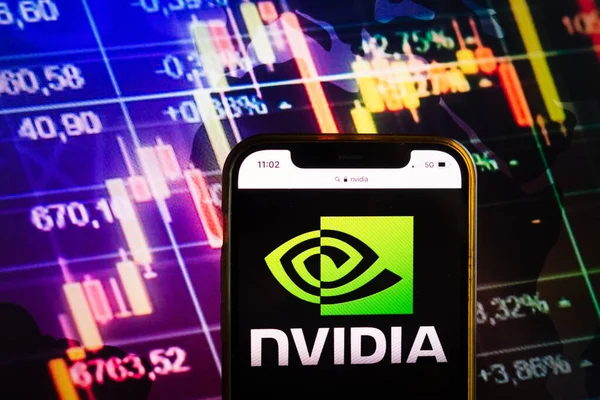Nvidia Stock Could Reach $10 Trillion Market Cap By 2030, Analysts Predict
Nvidia’s (NVDA) stock has experienced significant growth, reaching a market cap of $3 trillion on this week.

Analysts predict that Nvidia will achieve a $10 trillion market cap by 2030 or sooner.
This will be driven by a robust product roadmap, its impenetrable moat from the CUDA software platform, and its expansion as an artificial intelligence systems company that provides components well beyond GPUs, including networking and software platforms.
Historical growth and market predictions
In 2021, an analysis published on Forbes predicted that Nvidia would surpass Apple’s valuation in five years by capitalizing on the artificial intelligence economy.
As of Friday, Nvidia officially surpassed Apple (AAPL) in market cap, achieving this milestone two years earlier than expected.
GPU data centers and AI demand
On June 2nd, Nvidia CEO Jensen Huang stated,
The days of millions of GPU data centers are coming.
Huang emphasized that future interactions with the internet or computers will likely involve generative AI running in the cloud, driving extraordinary demand for GPUs.
Currently, data centers house tens of thousands of GPUs, but this number is expected to grow to hundreds of thousands by the end of 2025.
Tech giants are significantly increasing their GPU purchases to meet this demand. Microsoft aims to triple its GPU supply to 1.8 million GPUs this year for Azure, while Meta plans to deploy 150,000 H100s and 350,000 H100-equivalents.
Twitter (now X) is also ramping up its GPU cluster, with 100,000 H100s going online soon and plans for 300,000 B200 GPU purchases.
Big Tech’s investment and future scaling
Meta has approximately 600,000 GPUs deployed, including previous generations.
While AMD (NASDAQ: AMD) is expected to ramp up in 2025, Nvidia dominates the market with a $100 billion run rate on its data center, compared to AMD’s $4 billion.
Analysts predict that companies like Meta will increase their data center GPUs by at least 233%, from 600,000 to 2 million by 2030.
Broadcom also anticipates million-GPU clusters by 2027, suggesting even greater growth.
Nvidia’s data center segment, currently at a $90 billion run rate, is projected to reach $320 billion by 2027.
This 260% growth is based on AI accelerator estimates, which place Nvidia’s share at approximately 80% due to competition from custom silicon ASICs and other GPUs.
By the end of 2025, Nvidia’s data center segment is expected to hit $145 billion, with further growth anticipated.
AI accelerator market and Nvidia’s potential
Industry analysts estimate a high-30 percent compound annual growth rate (CAGR) for AI accelerators through 2030.
If Nvidia achieves a 40-percent CAGR, it could reach $800 billion from AI systems, representing 450% growth from the $145 billion expected at the end of 2025.
This bullish scenario supports the prediction of Nvidia reaching a $10 trillion market cap by 2030, according to report published in Forbes.
Nvidia’s valuation and future outlook
Despite its significant growth, Nvidia’s stock remains undervalued compared to its historical averages.
Currently, Nvidia trades at a forward P/E ratio of 44, down from 62 in January 2023. This undervaluation suggests that Nvidia’s stock has room for further growth, particularly given its impressive earnings and revenue increases.
Nvidia’s technological achievements
Nvidia’s transition from a GPU chip company to an AI systems company has set it apart from other tech giants.
Over the past eight years, Nvidia has consistently outpaced the FAANGs, establishing itself as a leader in AI technology.
This transformation is key to understanding Nvidia’s potential to reach a $10 trillion market cap.
More By This Author:
Apple WWDC 2024: Here’s What You Should Expect
Why Does TJX Stock Keep Soaring?
Nvidia Is Splitting Its Stock Today: Here’s What To Expect
Disclosure: Invezz is a place where people can find reliable, unbiased information about finance, trading, and investing – but we do not offer financial advice and users should always ...
more


